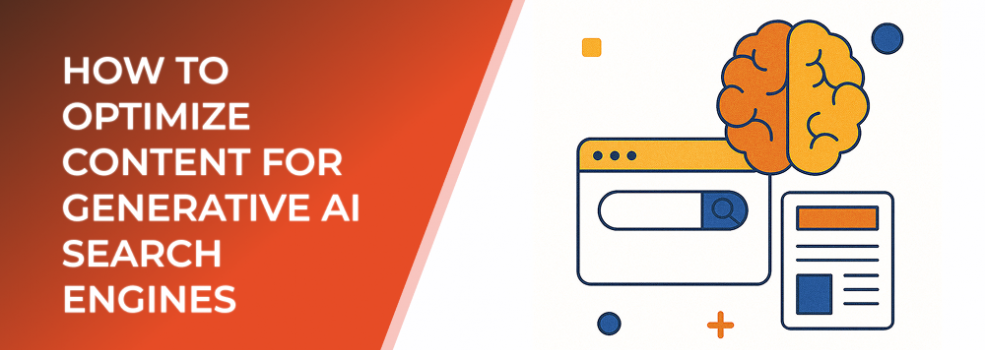Traditional search engines, like Google, display a list of links ranked by SEO performance. Generative AI search engines, such as ChatGPT, Google’s Gemini, and Perplexity AI, go a step further—they analyze, summarize, and synthesize information from multiple sources to deliver direct, conversational answers.
According to a 2024 Gartner report, by 2026, one in four search queries will be handled by generative AI tools rather than traditional engines. This means that visibility in AI responses will depend less on exact keyword matches and more on content clarity, trustworthiness, and context.
What Makes Generative AI Search Different
AI-driven search engines don’t just crawl pages—they interpret meaning, verify accuracy, and generate cohesive answers. This changes what “optimization” means for content marketers.
Key differences include:
-
Context over keywords: AI models focus on the intent and relationships between topics, not just keyword density.
-
Authority signals: Credible, well-structured information is more likely to be referenced.
-
Structured data importance: Schema markup and metadata help AI understand content relationships.
-
Information depth: AI favors comprehensive, fact-based, and clearly written content.
Optimizing for generative search requires creating content that machines can easily understand and humans find genuinely helpful.
Step 1: Focus on Clarity and Context
Generative engines thrive on clarity. Use structured headings, straightforward explanations, and consistent terminology. Avoid vague claims or incomplete statements. For example, instead of writing, “Facebook ads can help your business grow,” explain how and why: “Facebook ads allow small businesses to reach targeted audiences based on behavior, demographics, and interests.”
Add contextual depth with:
-
Examples and case studies
-
Comparisons or tables
-
Factual and statistical support
Clarity increases your chances of being cited by AI as a trustworthy source.
Step 2: Use Structured Data and Schema Markup
AI systems analyze structured data to understand page meaning. Implementing schema markup (for products, reviews, FAQs, and articles) helps generative engines categorize your content correctly.
For example, FAQ schema makes it easier for AI tools to extract concise answers, while Article schema ensures your brand is properly attributed. Research shows that pages with structured data are 25–30% more likely to appear in AI-generated answers than those without.
Step 3: Build Credibility Through Data and Sources
Generative AI ranks factual and verifiable content higher. Support claims with data, research, and original insights. Mention authoritative sources and cite relevant studies.
Use clear data references, like:
-
“According to Meta’s 2024 Ads Report, engagement-driven campaigns saw a 22% lower cost per conversion.”
-
“HubSpot found that articles exceeding 1,500 words are 80% more likely to rank in top AI summaries.”
When your content aligns with verifiable data, AI is more likely to recognize it as reliable.
Step 4: Optimize for Semantic Relevance
Instead of overloading your article with one keyword, expand your coverage using semantically related terms. For example, if you’re optimizing for “Instagram ads,” also include variations like “social media advertising,” “targeting features,” and “creative optimization.”
Generative engines prefer diverse but connected topic coverage—it helps them understand relationships and context. Tools like LeadEnforce can assist in finding related interest clusters for targeting or keyword expansion.
Step 5: Enhance Brand Signals and Author Identity
AI-generated summaries often include brand attributions. To improve the likelihood of being cited:
-
Maintain consistent author bios across all content.
-
Link your social profiles and organization schema.
-
Ensure factual accuracy and transparency in your about pages.
Strong brand signals increase trust both for users and AI systems.
Step 6: Update and Refresh Content Regularly
Generative AI tools value recent and relevant information. Update old content with fresh data, current examples, and new insights. According to Search Engine Journal, websites that refresh content quarterly can increase visibility in AI-powered results by up to 40%.
Regular updates help AI recognize your site as active and authoritative.
Final Thoughts
Generative AI search optimization isn’t just another SEO trend—it’s the next evolution of digital visibility. While traditional ranking factors still matter, the new focus is on clarity, credibility, and contextual value. The more understandable and trustworthy your content is, the higher its chances of being included in AI-generated answers.
By aligning your content strategy with these principles and leveraging LeadEnforce’s targeting tools, your brand can stay ahead in the rapidly changing search landscape.

